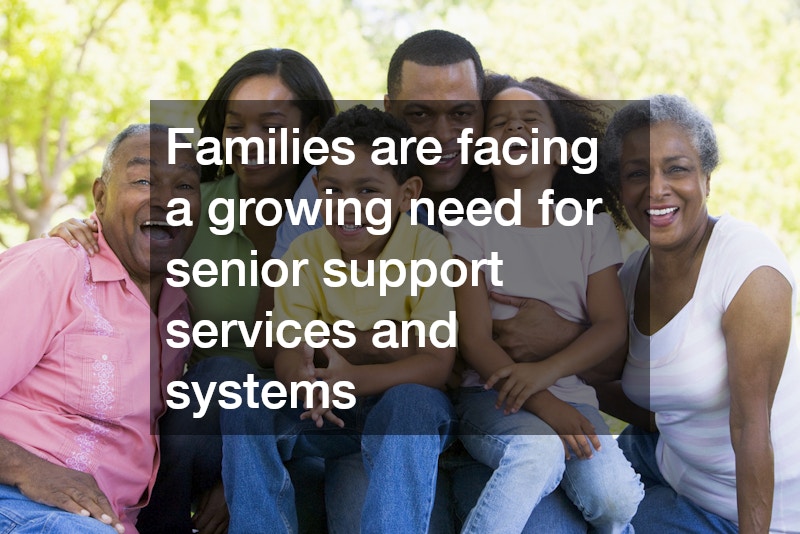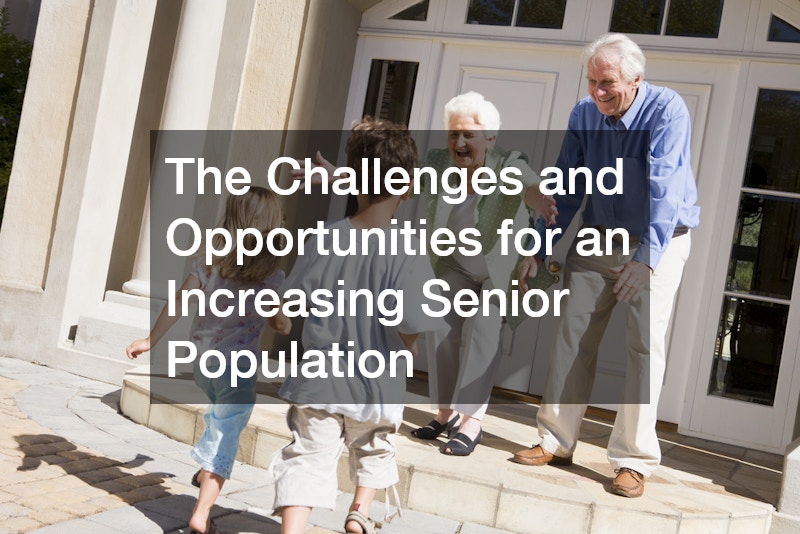
The aging of the U.S. population, with a median age now exceeding 38 years, brings profound social, economic, and healthcare implications. Families are navigating the complexities of caregiving, businesses are adapting to shifting consumer demands and workforce changes, and the healthcare sector is facing mounting pressures to meet rising needs. While these challenges can seem daunting, they also present opportunities for innovation, community-building, and economic growth.
By addressing the needs of seniors through comprehensive strategies and resources, society can enhance the quality of life for older adults while strengthening intergenerational bonds. This article explores these dynamics from multiple perspectives—family, real estate and business, and healthcare—emphasizing the importance of providing elderly care and caregiver services as key components of the solution.
Family Standpoint
Families often shoulder the primary responsibility for caring for their aging members, which can be both rewarding and challenging. With Baby Boomers entering retirement in record numbers, families are facing a growing need for caregiver services, home adaptations, and emotional support systems.
These dynamics are intensified by longer life expectancies and smaller family sizes, which can limit the pool of available caregivers. However, by leveraging technology, community resources, and proactive planning, families can mitigate the stresses of caregiving while fostering deeper connections with their elderly loved ones.

Challenges:
- Time and Emotional Strain:
- Caregiving responsibilities often require significant time, particularly for working-age adults balancing careers and raising children.
- Emotional stress is common, as caregivers must manage the health needs and emotional well-being of their loved ones while coping with feelings of guilt or burnout.
- Family members may face difficulties in coordinating care among siblings or relatives, leading to strained relationships.
- Financial Burden:
- The costs of caregiver services, including in-home care, assisted living, or medical equipment, can place a substantial strain on household finances.
- Many families lack access to affordable long-term care insurance, making it harder to prepare for the financial demands of aging relatives.
Opportunities:
- Building Stronger Family Connections:
- Providing elderly care can be a bonding experience, creating opportunities for family members to spend meaningful time together and pass down stories and traditions.
- Younger generations can develop empathy and learn life lessons by contributing to caregiving responsibilities, fostering stronger intergenerational relationships.
- Leveraging Support Systems:
- Families can benefit from community programs, such as respite care services, support groups, and caregiver training sessions, to share the burden of caregiving.
- Technology, such as health monitoring apps, virtual medical consultations, and communication tools, can streamline caregiving tasks and reduce stress.
Real Estate and Business Standpoint
The aging population profoundly impacts housing markets, workplace dynamics, and consumer trends, reshaping the business landscape. Seniors increasingly seek homes designed for accessibility and proximity to healthcare and community services.
Simultaneously, businesses face challenges in adapting to a shrinking labor force as older employees retire. These trends present opportunities for real estate developers, employers, and entrepreneurs to cater to the growing senior demographic with innovative products and services.
Challenges:
- Housing Accessibility:
- Many homes lack features like zero-step entryways, single-story layouts, and walk-in showers, which are essential for seniors to live safely and independently.
- The rising costs of housing renovations or senior-specific accommodations can limit accessibility for lower-income families.
- Workforce and Economic Impacts:
- As the senior population grows, younger workers are required to fill the gaps left by retiring employees, leading to labor shortages in industries such as healthcare, retail, and manufacturing.
- Businesses catering to younger demographics may face shrinking markets as consumer preferences shift to meet the needs of older adults.

Opportunities:
- Senior-Friendly Housing Solutions:
- Real estate developers can create age-friendly communities with features like universal design, access to healthcare, and walkable neighborhoods.
- Builders can focus on retrofitting existing housing stock with senior-friendly features, tapping into a growing market.
- Workplace Adaptations:
- Employers can retain experienced older workers by offering part-time roles, flexible schedules, and ergonomic work environments.
- Training programs can upskill older employees, helping businesses maintain institutional knowledge and mentoring opportunities for younger staff.
- Expanding Markets:
- Companies offering caregiver services, mobility aids, and senior-specific products like home health monitors or financial planning tools can meet the growing demand.
- Businesses that cater to older adults’ interests, such as travel, leisure, and wellness, can tap into a lucrative demographic.
Healthcare Standpoint
The healthcare system faces mounting pressures as the senior population grows, with rising demands for chronic disease management, preventive care, and mental health services. Medicare and Social Security spending are projected to soar, further straining resources.
However, advancements in medical technology and caregiver services provide opportunities to deliver cost-effective, high-quality care. A proactive approach that includes preventive measures and expanded caregiver support can help meet the needs of an aging population while reducing long-term costs.

Challenges:
- Rising Costs of Care:
- Spending on Medicare and Social Security is expected to increase significantly, with healthcare costs for seniors projected to double in the coming decades.
- Many seniors require long-term care services, which are often underfunded or inaccessible, placing a burden on families and healthcare providers.
- Workforce Shortages:
- The demand for healthcare professionals, including doctors, nurses, and home health aides, outpaces supply, creating gaps in service availability.
- Burnout among healthcare workers exacerbates staffing issues, particularly in high-demand fields like geriatric medicine and long-term care.
Opportunities:
- Innovations in Elderly Care:
- Telemedicine and remote health monitoring devices allow seniors to access care from home, reducing the need for frequent hospital visits.
- Personalized medicine and preventive care programs help manage chronic conditions and improve overall health outcomes.
- Expanding Caregiver Services:
- In-home care services, including skilled nursing and physical therapy, can improve seniors’ quality of life while easing the burden on traditional healthcare systems.
- Community-based caregiver programs and training initiatives can empower family members to provide effective care while receiving support from professionals.
- Focus on Preventive Health:
- Promoting healthy lifestyles, regular checkups, and mental health resources for seniors can reduce healthcare costs over time and enhance well-being.
- Early detection programs for conditions like diabetes, cardiovascular disease, and dementia can improve outcomes and lower treatment expenses.
A Holistic Path Forward
The aging population presents complex challenges, but it also offers opportunities for families, businesses, and healthcare systems to innovate and grow. By investing in caregiver services, age-friendly housing, and healthcare technologies, society can better support seniors and ensure their contributions are valued. Collaboration between public policies, private enterprises, and community organizations will be essential to addressing these challenges and creating a future where all generations thrive. Through careful planning and a positive approach to providing elderly care, we can build a society that celebrates and supports its senior members.
